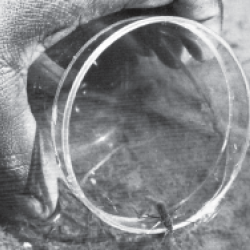Source Institutions
Source Institutions
Add to list Go to activity
Activity link broken? See if it's at the internet archive

In this outdoor activity/field trip, learners catch and observe water striders to explore their movement and feeding behaviors. To observe strider locomotion, learners look closely at caught water striders' body structure, then mark the striders' bodies with a dot of thick tempera or acrylic paint and release the insects back to different areas of the pond habitat. The paint markings make it easier for learners to watch each insect's movement. To observe strider feeding, learners catch other small insects from the pond habitat and offer them to caught striders. After the activity, all organisms should be released into the pond habitat. If possible, learners can return to the strider habitat a few weeks after the activity, to check how far the marked striders have moved from where they were released.
- 45 to 60 minutes
- 1 to 2 hours
- $10 - $20 per group of students
- Ages 6 - 14
- Activity, Field Trip
- English
Quick Guide
Materials List (per group of students)
- sweepnets
- observation trays
- bug boxes or magnifying lenses
- clear plastic cups
- half-meter-long sticks or flags
- meter tapes or meter sticks
- pipe cleaners
- bright acrylic or thick tempera paint in small plastic container
- copy of Aquatic Observation Aids Equipment card (in PDF)
- copy of Sweepnet Equipment Card (in PDF)
- 2- to 3-gallon buckets or large dishpans
Subjects
-
Life Sciences
-
Diversity of Life
- Animals
-
Ecology
- Ecosystems
- Populations
-
Evolution
- Evidence for Evolution
-
Diversity of Life
-
The Nature of Science
-
The Scientific Process
- About Inquiry
- Asking Questions
- Conducting Investigations
- Gathering Data
-
The Scientific Process
Informal Categories
- Animals
- Nature and Environment
- Outdoor Activity
- Physical Activity
Audience
To use this activity, learners need to:
- see
- see color
- be mobile
- touch
Learning styles supported:
- Involves teamwork and communication skills
- Involves hands-on or lab activities
Other
This resource is part of:
Access Rights:
- Free access
By:
Rights:
- All rights reserved, The Regents of the University of California, 1981
